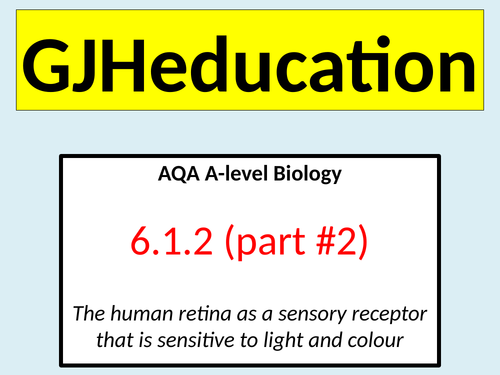






This fully-resourced lesson describes how the functional differences of the retinal rod and cone cells is related to their structures. The detailed PowerPoint and accompanying resources are part of the 2nd in a series of 2 lessons that have been designed to cover the details included in point 6.1.2 of the AQA A-level Biology specification. However, as explained at the start of the lesson, it has been specifically planned to be taught after the lessons in topic 6.3, so that students are aware and understand the meaning of terms such as depolarisation and hyperpolarisation.
It is likely that students will be aware that the human retina contains rod and cone cells, so this lesson builds on that knowledge and adds the detail needed at this level. Over the course of the lesson, students will learn that these cells contain different optical pigments and that this feature along with their differing connectivity to the bipolar neurones means that they have different sensitivities to light, colour perception and visual acuity. Exam-style questions are interspersed throughout to check on current understanding and also make links to previously covered topics. For example, students are challenged to recognise a description of the mitochondria so they can discover that this cell structure is found in the inner segment where it is responsible for generating the ATP needed to pump sodium ions out of the cells.
As detailed above, this lesson ties in closely with topic 6.3 and students will be expected to make links to synapses and to the changes in membrane potential that occur when sodium ions move in or out of a cell
Something went wrong, please try again later.
This resource hasn't been reviewed yet
To ensure quality for our reviews, only customers who have purchased this resource can review it
Report this resourceto let us know if it violates our terms and conditions.
Our customer service team will review your report and will be in touch.